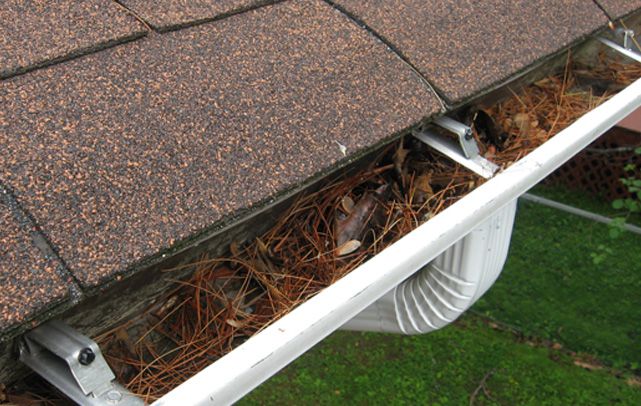Although rain gutters have several advantages, they still come with their share of problems if not maintained adequately. Below are a series of issues found with rain gutters along with related solutions.
Overflow and clogging eavestroughs
Clogged rain gutters that result in overflow probably constitute the main problem associated with eavestroughs. Obstructions lead to water infiltration in the roof system and in the foundations, not to mention that rain gutters may be pulled away from the fascia under the weight of debris and end up with a distorted shape. Consequently, it is important to clean your rain gutters a few times per year, either yourself or by hiring the services of professionals. However, installing a leaf guard will allow reducing to a minimum the number of times you need to perform this task.
In certain cases, rain gutters may overflow even though they are not clogged. This may be due to a lack of downspouts or eavestroughs that are too small. It is recommended to find a professional who will propose a solution tailored to your needs.
Collapse of the rain gutter system
It is possible that your rain gutters will eventually collapse, mainly if there has been heavy snowfalls or if the eavestroughs have not been installed using a continuous hanger system. All you need is a few nails or fasteners in strategic areas to make the gutter more solid. You can usually find such items in hardware stores or superstores. The closer the fasteners, the more solid the gutter. In certain cases, you may be required to change your entire gutter system altogether. Don’t hesitate to contact a professional if you don’t want to do this on your own.
Holes and cracks inside the gutter
As weather changes and water expands and contracts, cracks and holes may appear in your gutters. Make sure to caulk these cracks and holes in order to ensure the optimal performance of your eavestroughs. Here again, you may want to hire the services of a professional, especially if you find big holes.
Inadequate slope of the eavestrough
Usually, a rain gutter should have a slope of a quarter of an inch (0.64 cm) for every 10 feet (3.05 m) of gutter to lead water adequately to the downspouts. If you notice standing water in your gutters after a heavy storm, it means that the slope is not steep enough. Correcting this problem may be beyond your skill set, especially in the case of seamless gutters.
Rain gutter downspouts near the foundations
Downspouts that lead water too close to the foundations may cause serious infiltration problems. It is thus important that the slope of your property divert water away from the residence and that downspouts bring water at least 4 feet to 5 feet (1.22 m to 1.52 m) away from the foundations. A downspout extension may be used to that end. It is easy to install and not too costly.
Regardless of the issues you may be experiencing with your rain gutters, it is always time to see a professional who will tell you what is going on and propose a turnkey solution. Hardware stores or superstores sell tons of tools and items that can help you perform such work yourself. Irrespective of the decision you make, the important thing is to protect your most cherished investment: your home.
